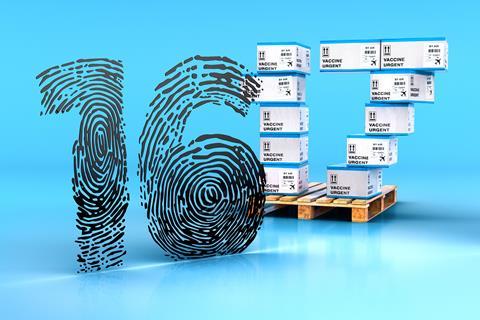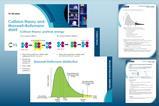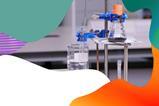Link forensic science and the Covid-19 pandemic to your lessons on instrumental analysis, separation techniques, data interpretation and health with Goals 16 and 17

On first appearance, the links between Goals 16 and 17 and chemistry teaching may not be obvious but when you start to dig deeper, there are opportunities to address some of the challenges they present. For example, chemists have a role in providing justice for all (Goal 16) through forensic science. Often, forensic evidence is the determining factor in successfully prosecuting crime. Equally important for sustainable development is the work of analytical, atmospheric and environmental chemists, who regularly use analytical techniques to assess risks to life from certain chemicals in soil, air or water before others go on to look for solutions.

This article is part of the Sustainability in chemistry series, developed to help you integrate the UN’s sustainable development goals into your teaching of chemistry. It supports Goal 16: promote peaceful and inclusive societies for sustainable development, provide access to justice for all and build effective, accountable and inclusive institutions at all levels; and Goal 17: strengthen the means of implementation and revitalise the global partnership for sustainable development.
Due to Covid-19, the global economy is contracting and many health systems around the world are under intense pressure. We need strong international cooperation to ensure that countries have the means to recover from the pandemic. Chemists and scientists around the world have a role to play in the development and distribution of Covid testing kits and vaccines (Goal 17). This provides a real-life context when teaching about health and disease or the data interpretation aspects of working scientifically.
Goal 16: sustainable development and justice for all
Chemistry – fixing the future is a short video clip that fits with Goal 16, showing chemistry’s role in solving global issues such as climate change, pollution, the energy crisis and feeding the world. It can be used as a quick starter to promote discussion among your students about how chemistry is contributing to a more sustainable world. You can integrate the accompanying job profiles into your schemes of learning to support delivery of STEM careers.
Chemistry – fixing the future (rsc.li/3oITsZC) is a short video clip that fits with Goal 16, showing chemistry’s role in solving global issues such as climate change, pollution, the energy crisis and feeding the world. It can be used as a quick starter to promote discussion among your students about how chemistry is contributing to a more sustainable world. You can integrate the accompanying job profiles into your schemes of learning to support delivery of STEM careers.
When presented with a forensic problem, students are usually fully engaged. Television programmes such as CSI have done a lot to capture interest. Instrumental analysis including IR spectroscopy, NMR spectroscopy, mass spectrometry, gas chromatography and GC-MS are covered in many post-16 chemistry courses. At 14–16, students learn about separation techniques such as chromatography, distillation and filtration, as well as how to test for the presence of positive and negative ions. Students enjoy the challenge of trying to identify unknown substances by carrying out a series of tests and analysing spectra.
Chemistry is a practical subject and there is a wealth of research showing how students learn through focused and well-planned practical activities. Setting students up with a forensic science scenario presents a great opportunity for practical work. The booklet Forensic chemistry, part of the ‘Innovations in practical work’ series published by the Gatsby Science Enhancement Programme, provides some good ideas and suggestions for carrying out forensic chemistry in the 14–16 classroom. The package contains a wealth of background information and comes with downloadable presentations and worksheets.
The analysis collection is a series of resources for teaching the principles and practice of spectroscopy and other analytical methods. Again, the resources provide some good background material, practical activities, student worksheets videos and animations.
Chemistry is a practical subject and there is a wealth of research showing how students learn through focused and well-planned practical activities. Setting students up with a forensic science scenario presents a great opportunity for practical work. The booklet Forensic chemistry, part of the ‘Innovations in practical work’ series published by the Gatsby Science Enhancement Programme (bit.ly/2Yw6VJM), provides some good ideas and suggestions for carrying out forensic chemistry in the 14–16 classroom. The package contains a wealth of background information and comes with downloadable presentations and worksheets.
The analysis collection (rsc.li/3oJL63T) is a series of resources for teaching the principles and practice of spectroscopy and other analytical methods. Again, the resources provide some good background material, practical activities, student worksheets videos and animations.
Introduce cross-curricular links
Running a debate in the classroom is a good way for students to learn. Especially if they are having to put forward the ‘other side of the argument’ from their own personal belief. The vaccinations debate kit provides a structured debate about the best policy to protect the public, balancing individual freedoms against public health and offers the potential for cross-curricular links with citizenship, history and biology. The question being debated is ‘Should children be required to have all their vaccinations before they can go to school?’ Eight character cards (four on each side of the argument) are provided. You can use this resource with 14–16 and 16–18 students. To increase demand, prior to the debate, ask your students to research and put together their own argument.
Goal 17: global partnership
The article How chemists create vaccines highlights the role chemists play in vaccine production and discusses the problems of developing a vaccine that can be used in hot regions where refrigeration can be a problem, covering the ideas of Goal 17. Chemistry is central to designing and improving vaccines and to stop them breaking down before they are used. This article can be used to provide context when teaching about the particle model and salts and making cross-curricular links with biology.
While living in a pandemic, it’s important for young people to understand why vaccines only protect the population if most people are vaccinated. Astra Zeneca has produced a set of videos showing how the Covid-19 vaccine works. The New vaccines workshop created by the UK Clinical Research Collaboration provides activities that introduce pupils to the ideas of herd immunity, the importance of informed consent in clinical research and developing a new vaccine. You can use these resources, together with current Covid-19 news headlines and articles, to bring the main messages home.
The article ’How chemists create vaccines’ (rsc.li/3lohNC4) highlights the role chemists play in vaccine production and discusses the problems of developing a vaccine that can be used in hot regions where refrigeration can be a problem, covering the ideas of Goal 17. Chemistry is central to designing and improving vaccines and to stop them breaking down before they are used. This article can be used to provide context when teaching about the particle model and salts and making cross-curricular links with biology.
While living in a pandemic, it’s important for young people to understand why vaccines only protect the population if most people are vaccinated. Astra Zeneca has produced a set of videos (bit.ly/3mzCBWs) showing how the Covid-19 vaccine works. The New vaccines workshop created by the UK Clinical Research Collaboration (bit.ly/3mzuR6W) provides activities that introduce pupils to the ideas of herd immunity, the importance of informed consent in clinical research and developing a new vaccine. You can use these resources, together with current Covid-19 news headlines and articles, to bring the main messages home.
Get more resources
- Take a global citizenship approach and explore the concept of Climate justice using case studies from Scotland and Somaliland.
- Link to careers using this video of a forensic scientist and show your students how they can gain work experience alongside their education with this job profile of a forensic apprentice.
- Investigate if The secretary is guilty with your 11–14 and 14–16 learners and tie in your teaching of dissolving, filtration, evaporation, chemical changes and crystallisation.
- Precious water provides context and shows the importance of global partnership to overcome issues such as water scarcity and includes experiment and maths in science teacher downloads.
Check out the rest of the Sustainability in chemistry series.














No comments yet